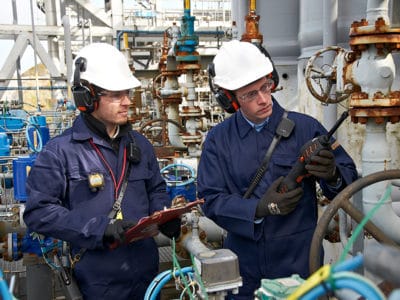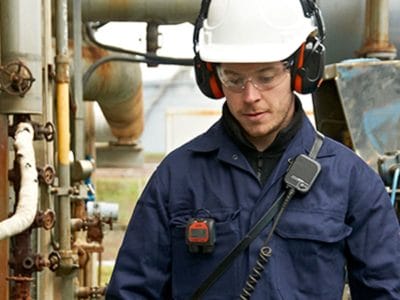
Monitoring Benzene
Formula: C6H6 | CAS: 71-43-2
Protecting both people and the environment whilst meeting the operational needs of your business is paramount and if you have operations in the UK you will be well aware of the requirements of the Control of Substances Hazardous to Health (CoSHH) regulations and likewise the Code of Federal Regulations (CFR) in the US.
Similar legislation exists worldwide, the common theme being an onus on hazard identification, risk assessment and the provision of appropriate control measures.
A Guide To Benzene Related Health Issues
Properties | Hazards | Symptoms | Limits
Hazardous chemicals that pose a risk to human health are present in many raw materials such as oil. Normally these are safely transported and contained within process pipework and reaction vessels during normal plant operation. However, routine plant repair and maintenance (planned turnaround) or a fugitive release, due to faulty flanges on valves for example, can potentially expose workers above the legal occupational exposure limit (OEL). Benzene, a hydrocarbon and volatile organic compound (VOC), is one such hazardous chemical. Found in oil refining and is an intermediary in the widespread manufacture of many commonly used plastics. According to the World Health Organisation (WHO) there is no safe level of exposure.
– European Chemicals agency (ECHA)
”Recognising the specific concerns over benzene, the EU has turned to the European Chemicals agency (ECHA) to “review and evaluate the information already available and assess the most recent scientific information”. The review, entitled Proposal in support of occupational exposure limit values for benzene in the workplace.
World Health Organisation (WHO)
Benzene Health Issues
Benzene volatises (evaporates) easily and indeed inhalation is the most common method of exposure but it can also be absorbed through the skin or by swallowing material containing it. The EU-wide and US-OSHA 8 hour time weighted average (TWA) airborne exposure for benzene is currently set at 1 part per million (ppm), equivalent to a concentration of 3.25 mg/m3 which is well below what most people can detect despite its distinctive ‘aromatic’ smell i.e. between 2.5 and 5 ppm in air.
The acute (immediate) effects of exposure may be headache, dizziness, drowsiness, confusion, tremors and loss of consciousness which presents additional risks if the employee is working unrestrained at height. It is also a moderate eye and skin irritant. Regular exposure can lead to chronic (long term) effects including:-
- myeloid leukaemia
- lymphocytic leukaemia
- non-Hodgkins lymphoma
- multiple myeloma
- aplastic anaemia
Leading & Lagging indicators
Health surveillance by conducting a urinary test or blood count can of course show evidence of exposure but these are lagging indicators i.e. after exposure has already taken place by which time damage may have been done.
Download our FREE Guide
“A Guide to Benzene Related Health Issues”
A Guide to benzene related health issues which can be downloaded below provides the reader with an in-depth balance of knowledge covering areas in which benzene exposure can be extremely dangerous. It also enters into how the government is planning to review and reduce exposure limits in the coming years.
















